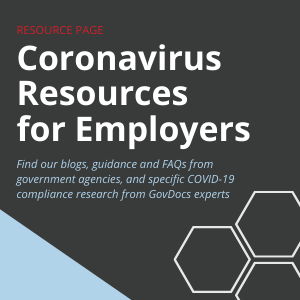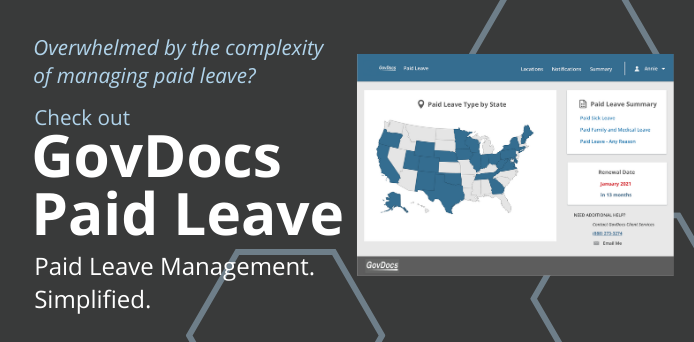EMPLOYMENT LAW NEWS
Reopening Economies: Regulations for Connecticut, Illinois
By Kris Janisch
Published July 7, 2020

In this installment of our series on states reopening their economies during the coronavirus pandemic, we focus on Connecticut and Illinois.
Continuing our examination of the requirements for businesses as states reopen their economies, today we focus on Connecticut and Illinois.
The varying approach states have taken to reopening across the U.S. presents challenges for multi-jurisdiction employers. Some use a statewide approach, some divide opening guidelines by region, and others focus more on industry type.
With the constantly changing nature of COVID-19, employers should be sure to consult local regulations as they plan to reopen — some states have already rolled back their plans.
Connecticut Reopening Plan
Like many states, Connecticut is taking a phased approach to reopening. The state is under Phase 2 of its plan, with Phase 3 expected to begin in mid-July.
Before any business can operate again in Connecticut, it must first self-certify that it is following safety guidelines. Employers that did so during Phase 1 do not have to recertify under Phase 2.
Connecticut on June 1 allowed for the opening of hair salons and barbershops. The latest guidance for Phase 2 went into effect June 17 and includes:
- Amusement parks
- Hotels
- Restaurants
- Museums, zoos and aquariums
- Indoor recreation (movie theaters, bowling alleys etc.)
- Libraries
- Outdoor events
- Personal services
- Gyms and fitness centers
- Media production
Generally, Connecticut requires:
- Capacity limit of 50 percent for most businesses
- Strict cleaning and disinfection protocols in all settings
- Continued working from home if possible.
- Facemasks worn in public at all times
- Social distancing guidelines
The state also asks that those in high-risk groups and over the age of 65 continue to stay home.
Within these industries, however, there are further restrictions, rules and regulations.
For example, amusement parks may operate at 25 percent capacity, outdoor only, with limits on the number of people allowed on rides and “maze-style” lines for guests.
Restaurants can only operate at 50 percent capacity indoors (100 percent outside). And any added seating for outdoor space during Phase 1 can remain in place under Phase 2. Buffets and self-service stations are not allowed.
Personal services — nail spas, tattoo parlors, etc. — have staggered shift requirements, along with employee contact tracing, visits by appointment only, and guidance on how to store and clean towels.
These are just a few examples of the Phase 2 reopening rules. Find further guidance by industry on the Connecticut website.
Lastly, Connecticut on July 3 also loosened restrictions on indoor (25 people) and outdoor (100 people) gatherings, as well as outdoor event venues such as amphitheaters and racetracks, allowing them to operate at 25 percent capacity.
Illinois Reopening Plan
While Illinois breaks out its reopening plan by both region and phase, the entirety of the state is now in Phase 4. (Phase 5 will mean all sectors of the economy can operate normally with safety guidelines and procedures.)
Though businesses must adhere to Illinois Department of Public Health (IDPH) guidance, at a high level, Phase 4 of the Restore Illinois plan allows for:
- Manufacturing: All manufacturing open
- Non-essential businesses: All employees return to work, though employers are encouraged to provide accommodations for COVID-19-vulnerable employees
- Bars and restaurants: Open with capacity limits
- Personal care services and health clubs: All barbershops, salons, spas and health and fitness clubs open with capacity limits
- Entertainment: Cinema and theaters open with capacity limits
- Retail: Open with capacity limits
The sticking point for employers is the IDPH safety guidelines. Mask-wearing and social distancing rules apply, but the state has compiled a bank of resources by industry. Below are some of the guidelines for a few of the industries.
- Bars and restaurants – Six feet between tables, 25 percent capacity for standing areas, recordkeeping of all external suppliers who enter the premises
- Fitness centers and gyms – Closure of saunas and hot tubs, testing requirements for contact sports, touchless check-in, 50 percent capacity
- Retail – Signage regarding protocols, sanitizing fitting rooms, disinfecting shopping carts and baskets, 50 percent capacity
Check your industry on the Illinois website for further guidelines and best practices.
Conclusion
States are creating a host of rules and regulations as they work to get their economies back on track.
Each state faces a unique set of circumstances, and with that varying rules for reopening. Employers may look to more restrictive measures to apply companywide, or work to abide by individual state rules.
Again, governments are moving quickly in response to COVID-19 and employers with locations in several states must research local laws to ensure compliance.
This Employment Law News blog is intended for market awareness only, it is not to be used for legal advice or counsel.
Keep Informed
with GovDocs Labor Law News

What is GovDocs?
GovDocs simplifies employment law compliance for large, multi-jurisdiction employers in the U.S. and Canada. The GovDocs software platform integrates three solutions in one convenient place to help you master the employment laws impacting your business. Whether you manage a postings, minimum wage or paid leave program, our products cut through research time, provide proactive insights into the everchanging landscape of employment laws and reduce the risk of noncompliance. The company is headquartered in St. Paul, Minn.
Have fewer than 30 locations?
The GovDocs Poster Store simplifies posting compliance for employers with less than 30 locations across all industries, offering a variety of posting products to meet your labor law compliance needs.



